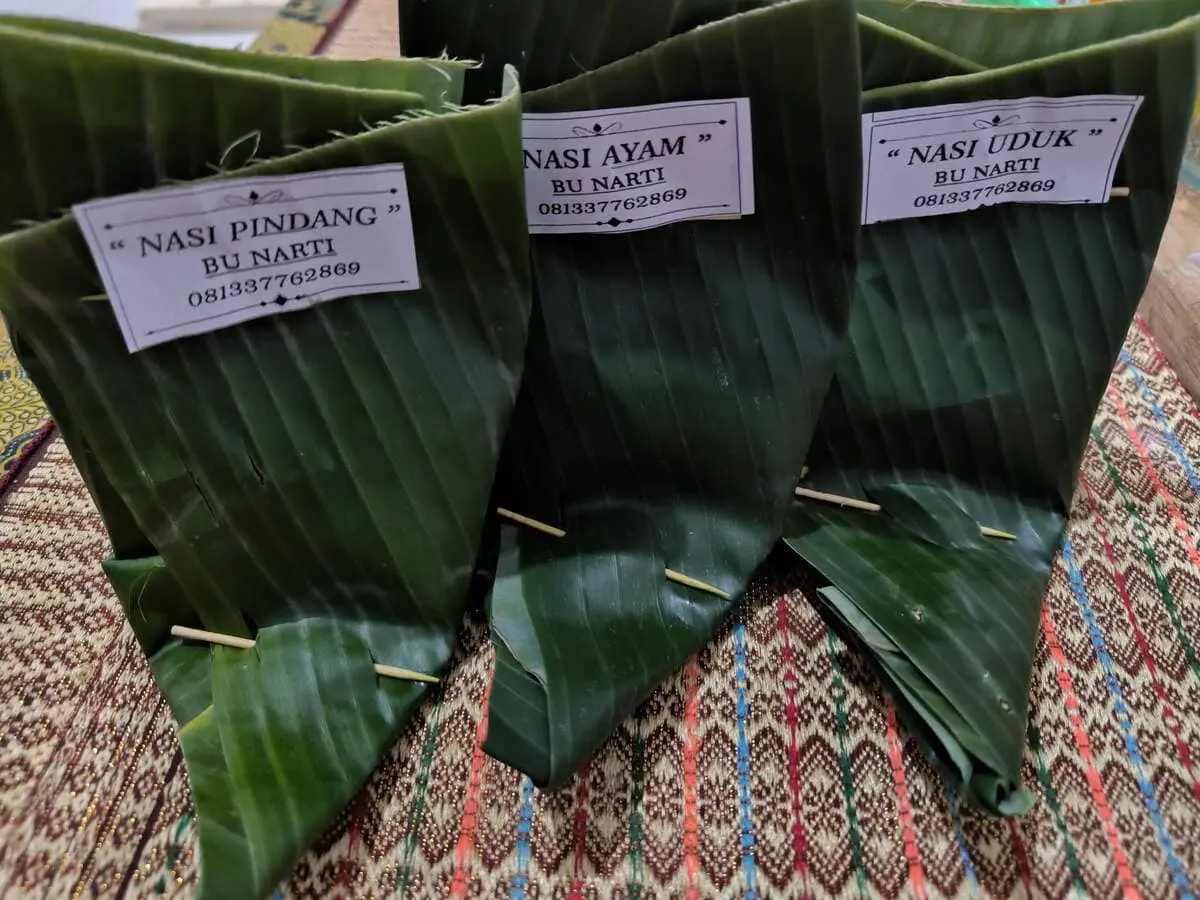It’s more than just rice wrapped in banana leaves. Nasi Jinggo is one of the food in Bali you should try. You’ll find different versions across the island. Some have spicy chicken, others might have fish or tempeh or even pork. But each bite takes you on a Balinese journey. Best part, this meal cost about often around IDR 5000, and supports 100% the local seller!
Where does it come from?
It’s not just a recent favorite; it’s been around for a while. Now, the name “Jinggo” is quite interesting. Some say it comes from the price it once had, which in Chinese Hokkien means “one thousand five hundred”. Others believe it’s named after a popular movie from the past called “Django”. There’s also a fun theory that it’s named after night-time motorbike riders in Bali, known as “jagoan”. They loved this dish after their night rides. While the true origin of the name remains a bit of a mystery, one thing is clear: Nasi Jinggo holds a special place in Bali’s heart. (source Nasi Jinggo on Wikipedia)
How is Nasi Jinggo made?
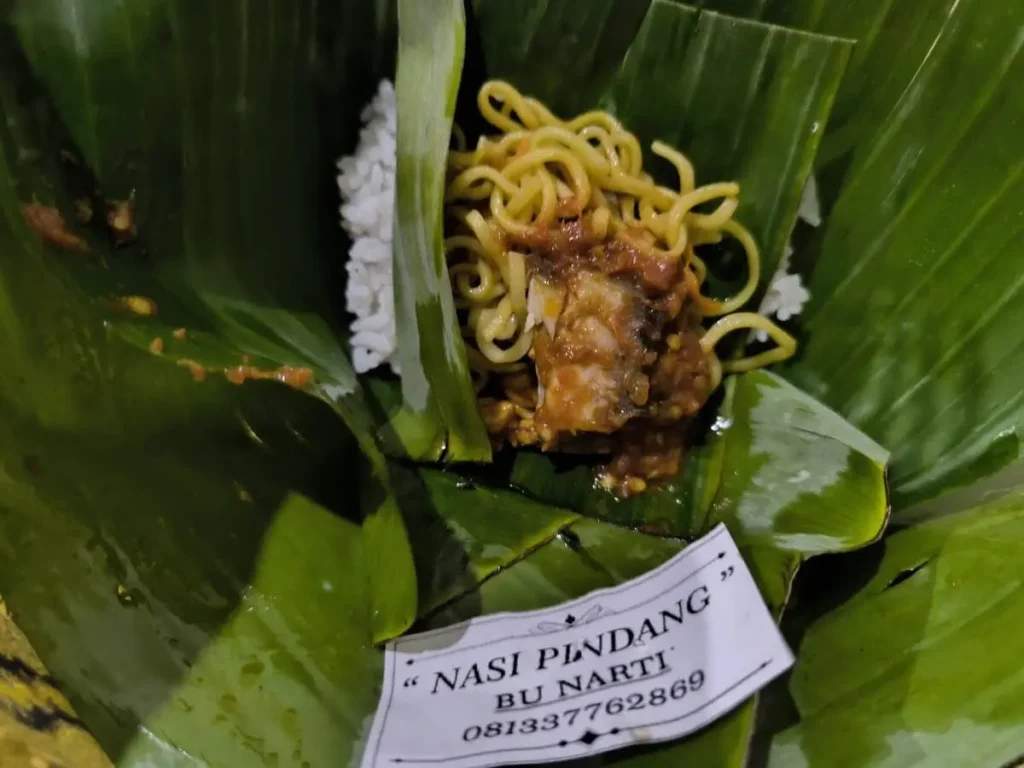
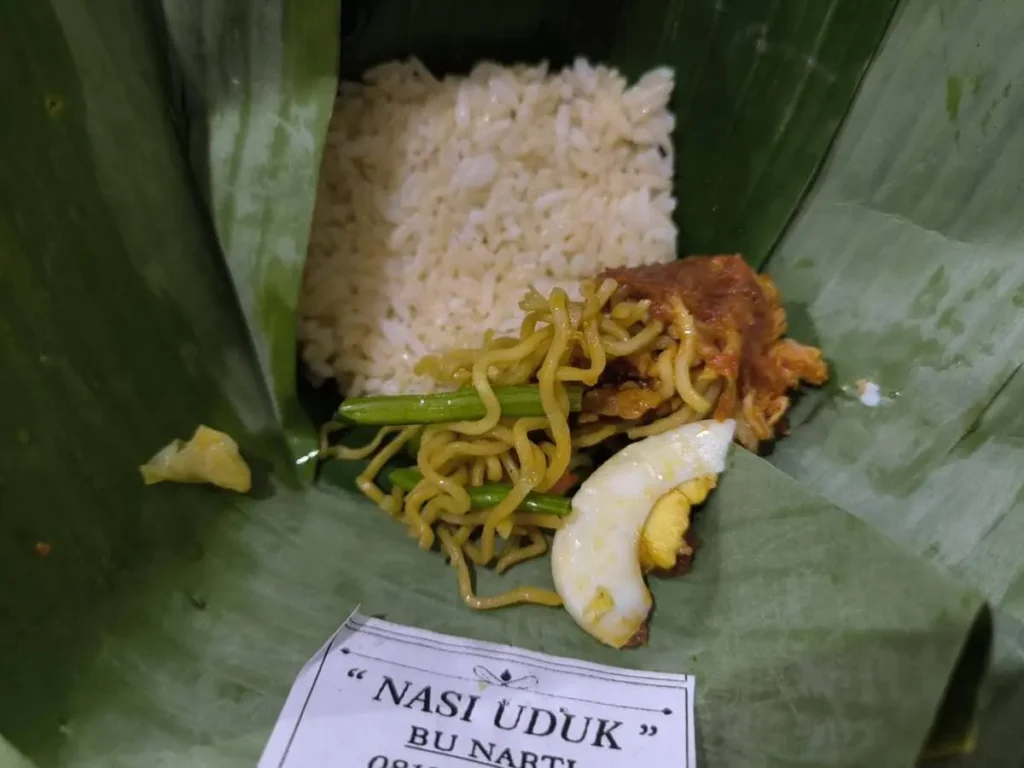
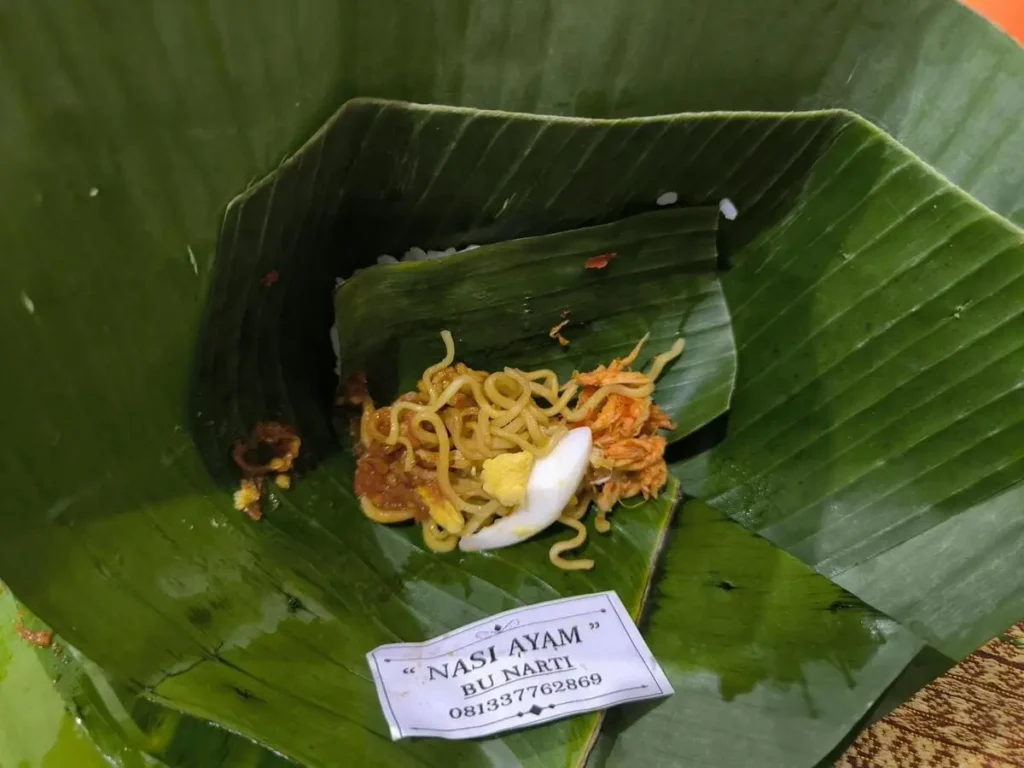
The preparation is an art. The rice is cooked to perfection, and the side dishes are chosen to complement it. The side dish is separated with another part of the Banana leaf. Some might add a dash of sambal for a spicy kick, while others might go for a milder taste. But no matter the variation, there’s one thing that remains constant: the banana leaf wrap. This isn’t just for looks. The banana leaf gives this dish a unique aroma. When the hot rice and its sides touch the leaf, a wonderful scent is released. It’s a smell makes the meal give a unique taste as well.
Nasi Jinggo is part of tradition and culture
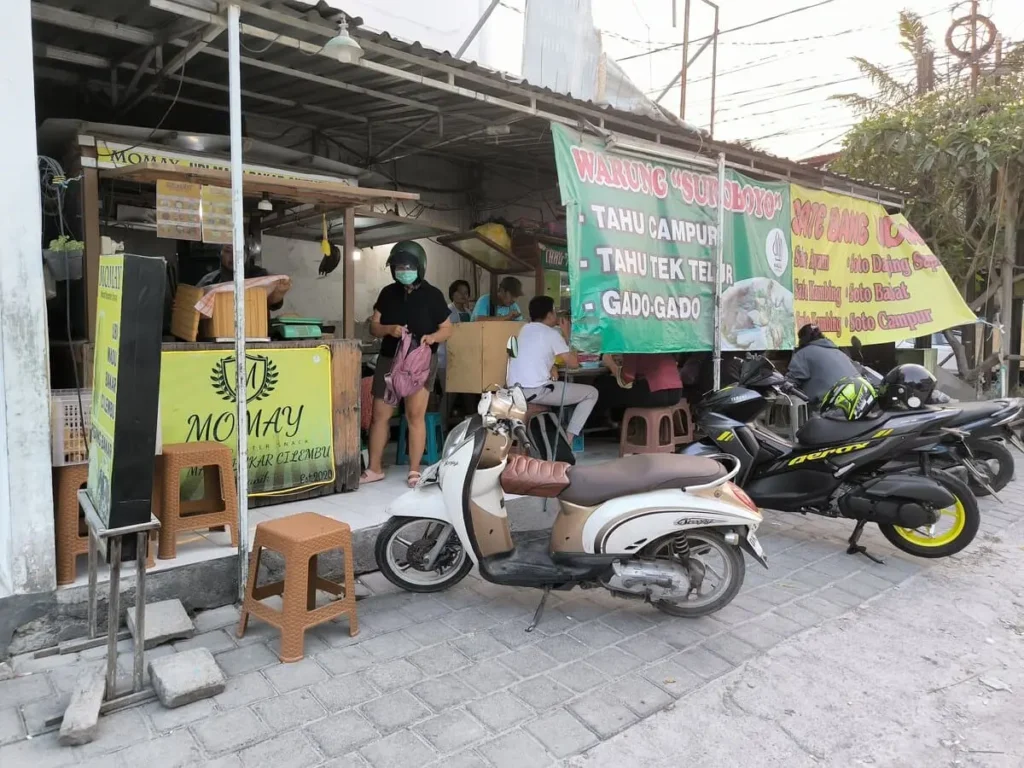
In Bali, food isn’t just about eating. It’s about stories, traditions, and connections. Nasi Jinggo is a perfect example. This dish isn’t just popular on the streets; it has a deeper meaning. During important ceremonies, like the Ngaben funeral rites, this banana leaf packaged food is often present. It’s a way to honor and remember loved ones.
Walk around Bali, and you’ll see Nasi Jinggo being sold everywhere. From busy city corners to quiet village roads, it’s a favorite snack for many. But it’s more than just a quick bite. For the Balinese, it’s a reminder of home, of family gatherings, and shared moments.
The difference with Nasi Kucing:
Nasi Jinggo and Nasi Kucing both come wrapped, ready for a quick bite. Nasi Kucing, meaning “cat rice,” hails from Java. It is named for its small portion, like a meal fit for a cat. It’s a quick snack, sometimes with a slice of omelette or a bit of sambal (mostly it’s just few spoons of rice). On the other hand, Nasi Jinggo, with its rich sides and banana leaf aroma, feels like a mini feast, telling tales of Balinese traditions.
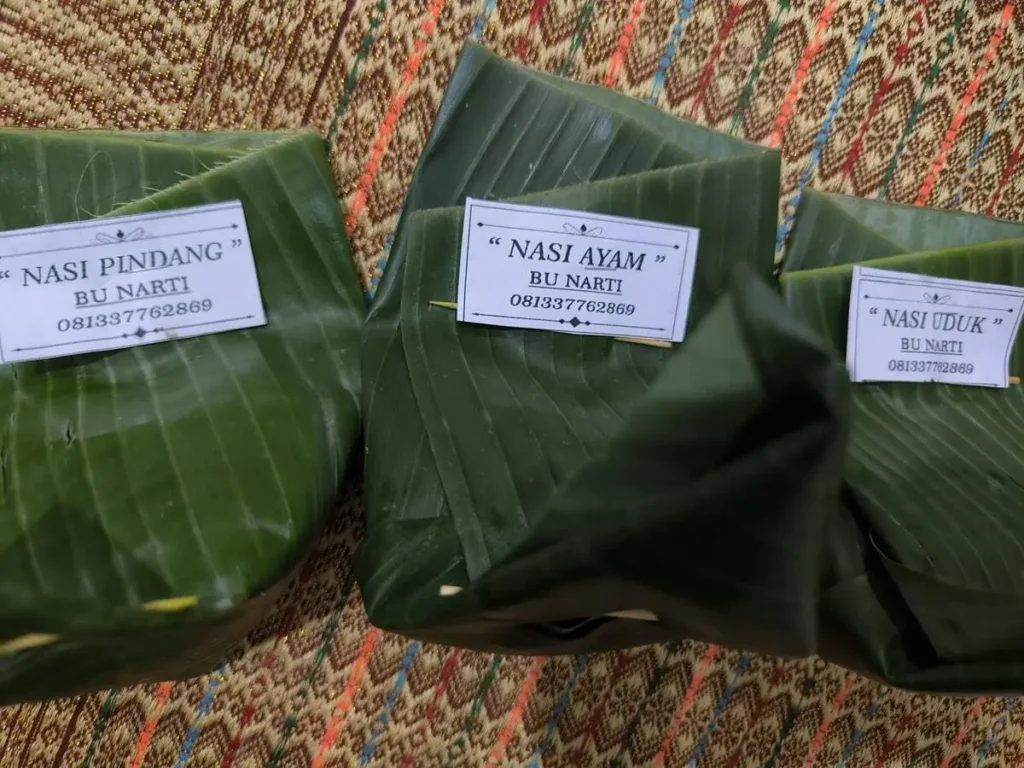
The difference with Nasi Bungkus:
Nasi Bungkus is different in wrapping and slightly more from the side disch. But there’s a twist. “Nasi Bungkus” literally means “wrapped rice.” It’s all about how the rice and its sides are bundled up. Across Indonesia, Nasi Bungkus is loved for its neat package of rice and varied sides. Nasi Jinggo, though, is distinctively Balinese. It’s not just about the wrap but what’s inside – a blend of flavors that capture Bali’s essence.
Experiencing Nasi Jinggo: A Must for Bali Visitors:
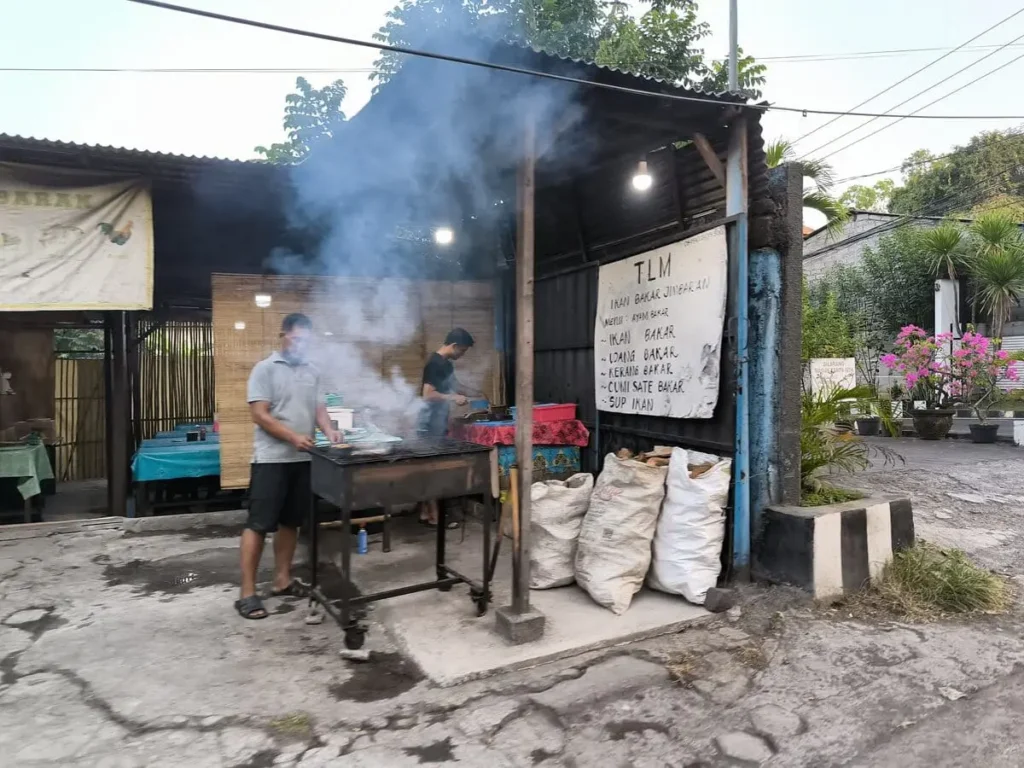
This food is a must-try on that list. This dish isn’t in fancy restaurants. its true essence is best captured at local street stalls, bustling with activity under the evening sky. Wander the streets of Ubud, Jimbaran or Seminyak, and you’ll find vendors with banana-wrapped food.
If you’re unsure where to start, ask a local. They’ll often have a cherished spot where they believe the Nasi Jinggo is just perfect. Since it is in a bananaleaf, I would say this is pretty environmental friendly as well! Less Plastic and pollution!
Hi I am Dwi. I am a blogger, travel agent and a mom of a lovely daughter and wife to a supportive husband. I customize and plan tours in Bali and islands nearby for a living and have been doing this for more than 14 years. Get in touch via contact [at] taletravels.com
